Harry’s been in touch again with his N scale layout 32×64.
If you want to get up to speed, here’s his last post.
“Hi Al,
It’s been quite a while since I sent in photos of my layout, several years by my count, so I don’t know if you remember.
I’m a retired aerospace engineer with a small N scale layout 32×64.
I kinda stopped working on the layout a while back as I was doing a lot of sailing and flying, but I sold my homebuilt airplane last summer after 20 years of flying it, and the sailing slowed as well.
So since I was cooped up, I gravitated back out to the shed and went back to work on the layout.
I had just recently gotten back to the hobby after 30 years and it all started with your Beginners Guide. You may recall I termed mine a ‘test layout’ since I originally built it in a hurry to test out ideas and new materials in getting back to the hobby after so long and it sort of grew from there.
With the advent of DCC and all the low cost microelectronics I was hooked, (re-hooked). Having all the unwelcome COVID-19 shutdown time, and to forestall boredom, I think I made enough trees to reforest the Sahara (in N Scale of course) and I didn’t really expand the layout at all, just kept adding people, trees and Arduinos, sigh. I still consider enlarging the layout to go all around my 8 x 14 foot shed, but I usually just sit quietly till the feeling subsides.
I have gotten into Arduino and Raspberry Pi projects and right now I’m working on a crossing gate system using Arduinos. I need to find an old fashioned doorbell with the arm and coil for the sound, but they are becoming quite rare.
I use a Raspberry Pi to compile and download my Arduino code, so my shed is a computer room as well as a train room, but it keeps me from going mad… I think… The layout itself has 6 Arduinos beneath, controlling the main street traffic lights, campfires, arc welder in the factory, hotel room lighting and several other tasks as well as controlling the 17 turnouts on the pike.
I will end up using two Arduinos to control the crossing gates since they don’t multitask well, but at a cost of $2.50 ea US I can afford to be generous with my distributed processing. After 25 years of writing code for inertial guidance systems, it’s fun to play with these things. I was retired for over 5 years before I discovered them and my coding skills were getting pretty rusty. It’s coming back, sort of….
It’s been so long since I sent those photos I don’t even remember which photos I sent and I don’t think that article is on line anymore, so I’ve attached a few photos I’ve taken recently which I’m sure won’t be duplicates. I may send them in several emails since I don’t know how much the web will tolerate.
Keep up the good work and stay healthy.
Sincerely
Harry”
A huge thanks to Harry for sharing his N scale layout 32×64. Loved the narrative just as much as the new pics. Stunning stuff indeed.
And I’m only human – when people say kind things about the Beginner’s Guide, it really does put a smile on my face.
Now on to Kim:
“Hi Al. here is an idea for police strobes, emergency strobe, warning, or even a end of train device.
I tied into the mini power strobe that was there. It would destroy the board if I tried to remove it so I tied into it. I added a foot long wire with no power lose. I am using the rechargeable battery that comes with it and can recharge it. Will last a very long time strobing. or can use a rechargeable phone battery say 2.7 volts doesn’t take much power so don’t over power it with high voltage.
The PC board came out of a mini helicopter. So if you find them in garage sales cheap buy them. If you don’t have strobe lites on your train and want them and don’t want to hook to a decoder or isn’t any decoder think about using these boards. Small anough to fit into a Hoscale car or truck. So when I garage sale picking will look out for these toys. I am sure I can tie into the board to operate mini 2 servo’s say for a crane or something. another junk idea.
Take the led and add a very very tiny bit of solder on the tips of the led. Dont over heat the led – be fast. If you look carefully you see I put one post to the resistor and the other post to the mini led that is on the board. Sort of tie into it.
The tiny original led will be left alone as it would destroy the board trying to remove it. Just tie into the tiny one. When you go to solder the led be fast at it when tying into the led or you will over heat it. I removed the tiny battery that came with it to attach a few longer wires for power.
Max power should be 3 volts or burn the board or blow something. The board came with two other led’s one on each side that I unsoldered as I didn’t need them. Hope this helps
Kim”
(Kim’s post reminded me of Steve’s: Model railroad signal wiring.
A big thanks to Harry and Kim.
That’s all for today folks.
Please do keep ’em coming
Best
Al
PS Latest ebay cheat sheet is here.
PPS More HO scale train layouts here if that’s your thing.
And there’s the Silly Discount bundle too.
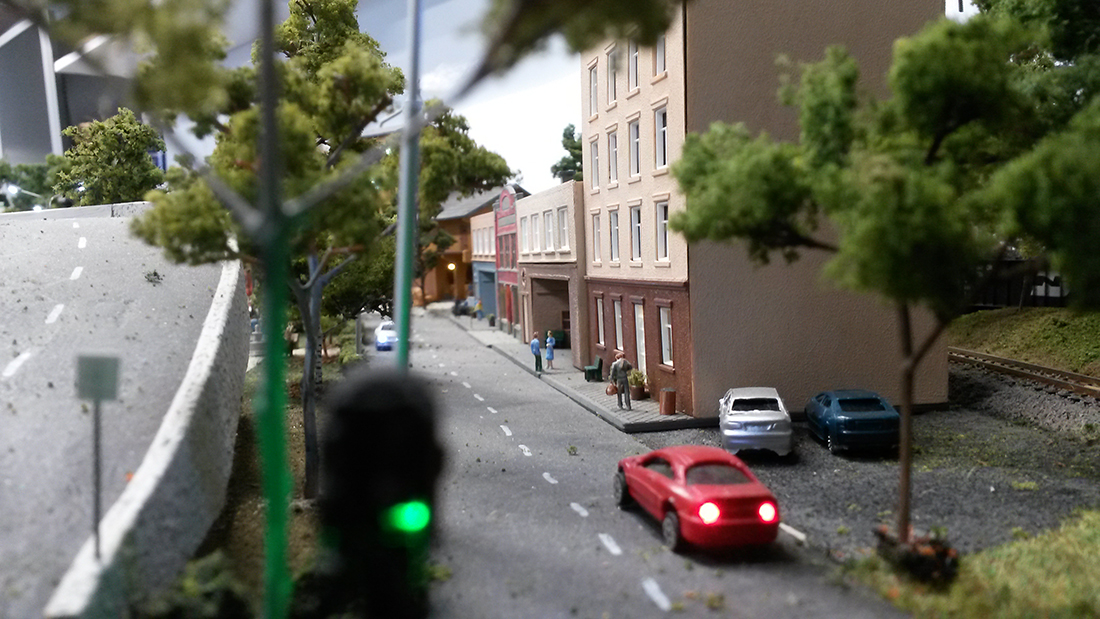
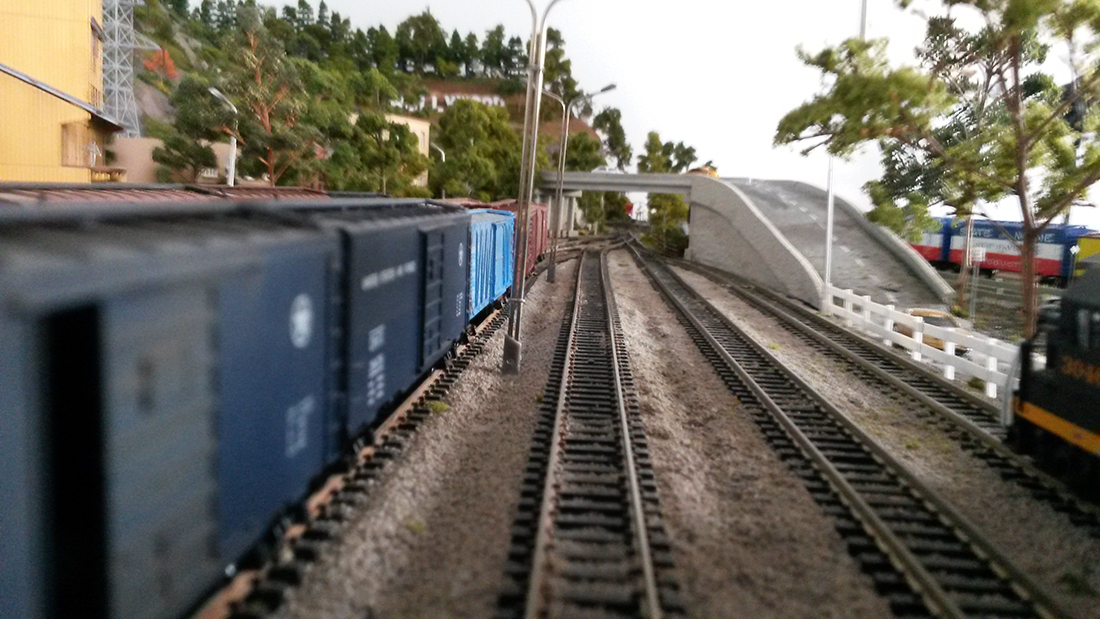
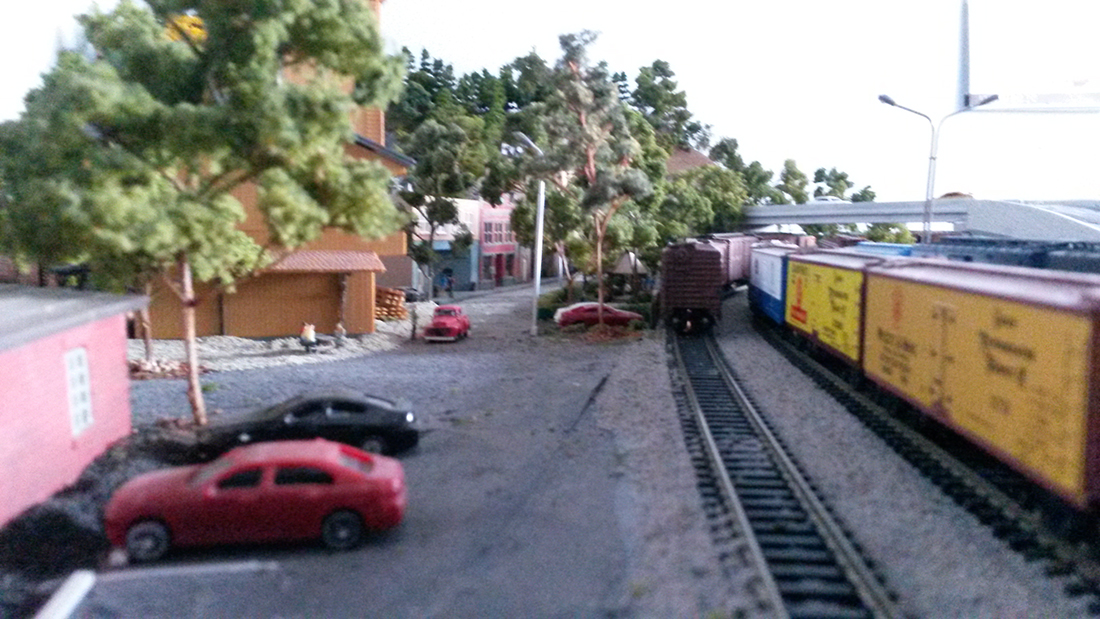


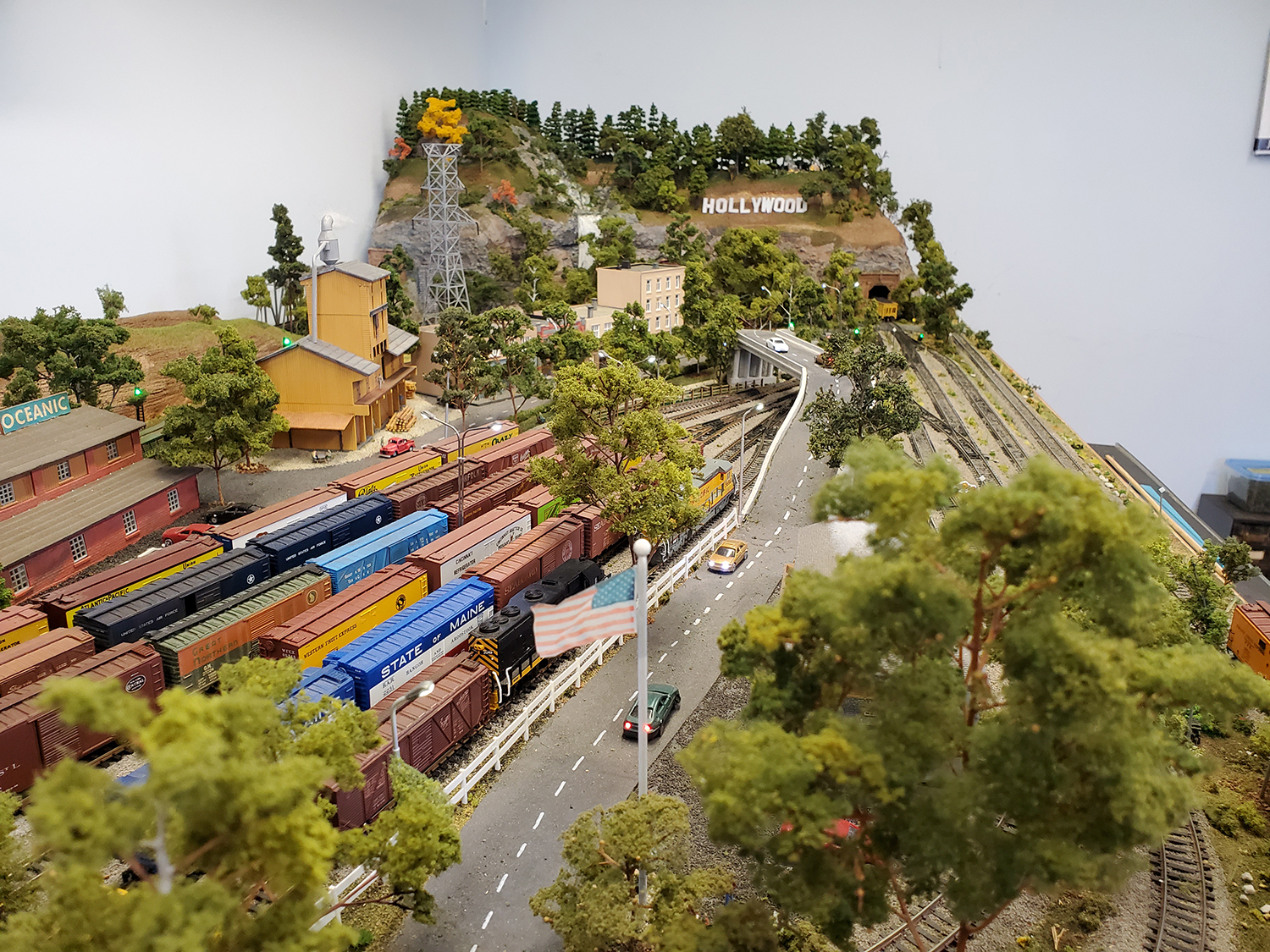
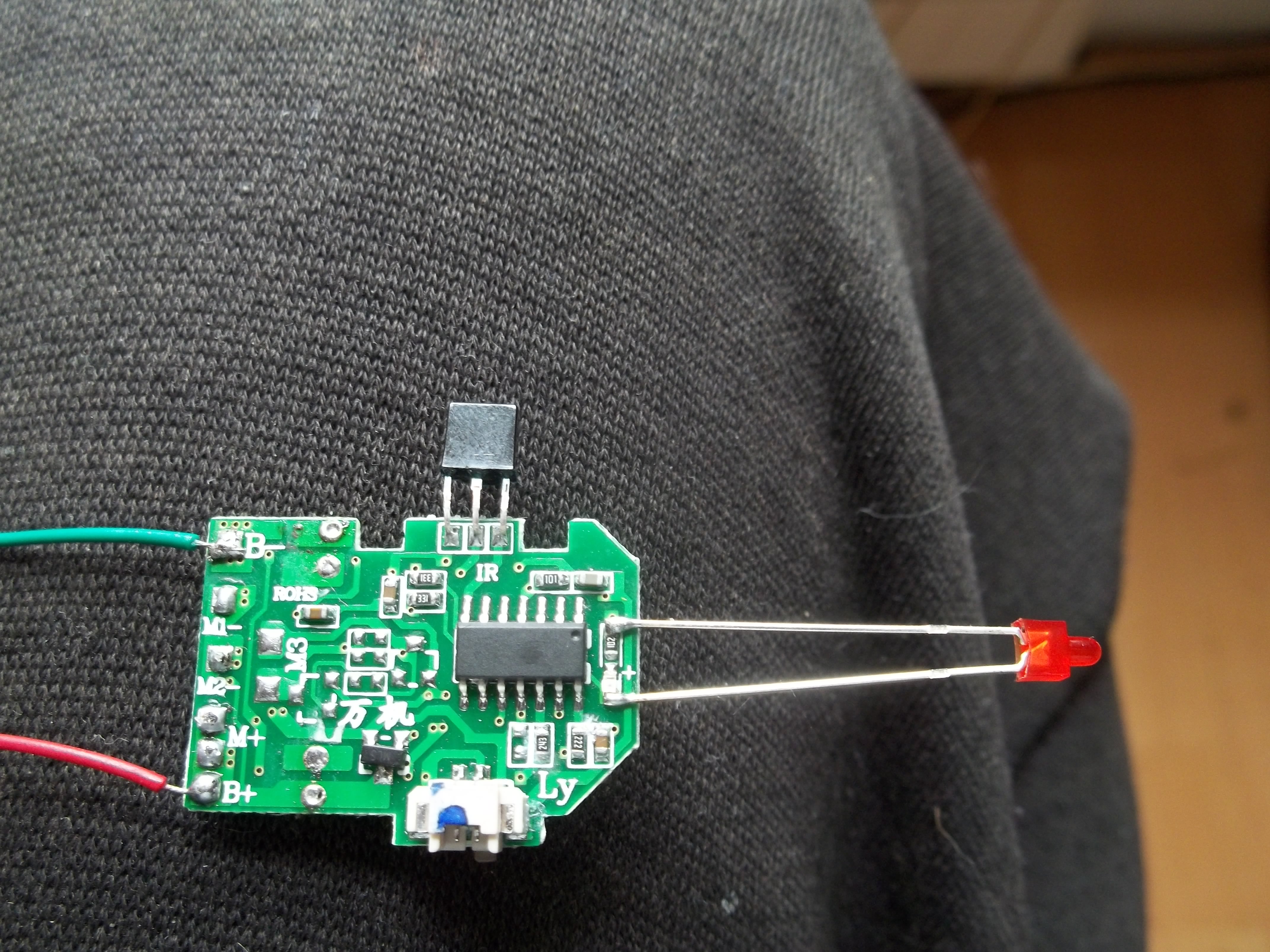
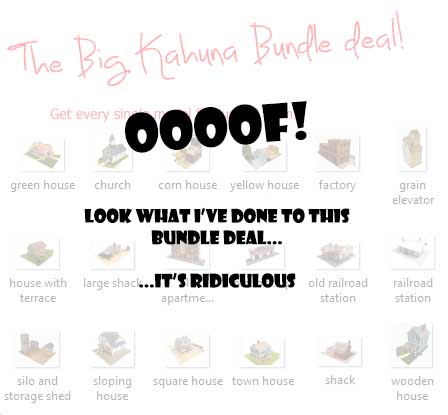

Excellent work Harry, would like to see what the track plan looks like for the space you have – it looks like a railroad!
Cheers from Australia
Trevor
Wow! Some of those photos look so realistic. Great job! Exciting to see. I’ve been “playing” with model trains for 55 years, although mostly an armchair modeler. Stuff like yours keeps me going. Thanks for that!
Hi Harry. Like you I have been experimenting with Arduinos to control bits of my layout. I am just finishing a project using an arduino nano with two SG90 servos to control crossing gates. Two gate crossings turn out to be more complex than 4 gate as the gates can clash if the timing is wrong. I have slowed the servos down by using a loop with a delay to control the pwm output from the nano. The crossing is on a branch line so the gate position is controlled by the branch line points motor. It all works fairly well. The only (as yet) unsolved problem is the servos jumpimg on initial track power up.
Great photos and scenery ,life like.
AWESOME JOB !!!
Beautiful work! The green light in the photo tells me that you should keep moving forward. Talent like this has no bounds and as one writer suggested, your work keeps others excited about the hobby. You are a hobbyist, a modeler, an artist and a motivator. Thanks for sharing.
WOW! Looks like 1:1 scale to me. Great work
Your fine detail is very realistic. It is the best rendering of scenery I personally have ever seen. I have just started a new layout in n scale and your layout is inspiring. Rob McCrain- Farland Howe
Thats a great layout you have built there Harry ..Dangerous Dave
Boy Harry that’s a great looking layout. I’m one of those people who needs lots tech help. Your layout shows me I need more,help. Keep up the great work.
Marklin Ed NY USA
It certainly is great to see how true to life modelling can be done. This is truly the most life like I have ever seen. You are an inspiration to us all. Thanks you for sharing your art.
Great work….love the Hollywood sign.
This is so life like, a real happening, very nice
Damn. I just threw out one of those old doorbells about 2 months ago. It was just gathering dust in the basement. Would have let you have it for free.
I concur with all above: first glance looks like downtown photos! Hollywood sign made this Southern Californian smile. Trainyard like that along LA River too!
Harry, what a great idea, I never thought of using a Raspberry Pi to compile and download Arduino code to control turn-outs etc… Any tips would be welcome.
I know zip all about Raspberry Pi and Arduino code, But like you I have been coding since IBM 401 days machine language – mid-sixties, and still fiddle with script languages.
Is Arduino code a standard language?.
Can we get Harry’ email please. It seems to me these type layouts require great model train skills almost like a great artist. Also a layout like this would cost about how much time to build.
I have seen clubs wit a good number of members that work together to build large layouts with some found the layout framing, some track , some mountains, some scenery , some electrical, some buildings, some roads , some vehicular, dome people and animals etc.
No offense to clubs like this but a lot of them like myself don’t have the skills, money, time etc to create a fabulous layout like this one.
I see virtually all here for many months great realistic layouts. Allistar do you see some that are very average like mine are.?
All these folks to me are like master artists but way better because of all the different aspects involved. It’s a shame a regular guy like me can’t come close to these.
What are the best guides online and magazines to get going correctly with all the hints? Are there ones for beginners to a few moderate hobbyists that are good ant not very hard? Thanks.
Nice Looking layout, Well done!!
Hi Harry, What a beautiful layout you have. Your pics were stunning as well. I hesitate to make only one comment–and it’s not about your layout or trains. Please don’t see it as a critical one. The sole incongruous thing I noticed (owing to my Dad who pointed out to me at a young age that it isn’t a good idea to pass anyone on a hill or a curve) is your continuous use of a broken white line on your road(s). Over the years, driving a real car, I realized the truth behind his statement. Therefore, I humbly suggest that your Road & Safety Department repaint those broken passing lines in your automobile highway, and replace them with a solid line or two.
Yours, Tom
great layout… how to you keep the dust off it?
Harry, Great layout! It looks like the work of an aerospace engineer: very organized with lots of attention to detail. Your street level photos do a fantastic job of showing off the details. Your “Heavenly Bamboo” trees are very realistic and I like the way you used smaller trees at the top back of the mountain to create the illusion of distance. I also liked the Hollywood sign. You’ve done a great job in N scale that rivals larger scale layouts. Personally, I just sent all of my N scale equipment and track to my brother because I found it too tiny for my old eyes and fingers to work with, but I admire anyone who can work in N, TT or Z scales.
As a former software engineer, I too have recently picked up a couple of Arduinos to play around with. The coding is similar to C or C++, so not too hard to adapt to even though the last serious code I wrote was back in 1996. I’d be interested to learn more about how you’re using the Arduinos to control your turnouts.
That is strikingly realistic with excellent planning and layout.
A lot of imagination went into this. KUDOS!
Great job. I have a crossing that has two gates but since I redid my layout, I had a couple of Tortoise motors left over. I got frustrated with trying to get servos to work the way I wanted. I used a Mega, a flasher circuit board.
Arduino uses C++.
Bob in Virginia.
Nicely done. Great details throughout and the photos from ground level really project realism. And the track work with ballast is a great look.
Jim AZ
Hi Kim,
Is there any more info on the board or the manufacture model name / number of the helicopter this board came out of? I would love to get these into my cabooses / cabeese rear lights.
Harry, I’ll learn the Arduino stuff later, but I wanted to complement you on your very realistic trees! Most people that buy collections of trees produce very unrealistic “forests” of trees, all the same height. You obviously have looked at real ones.
good work.
Great Job!!
I liked those ‘trackside’ views!